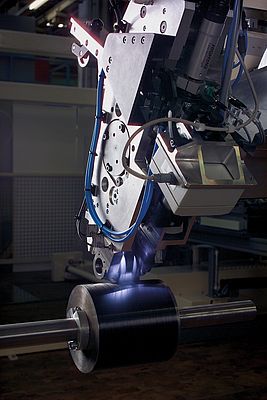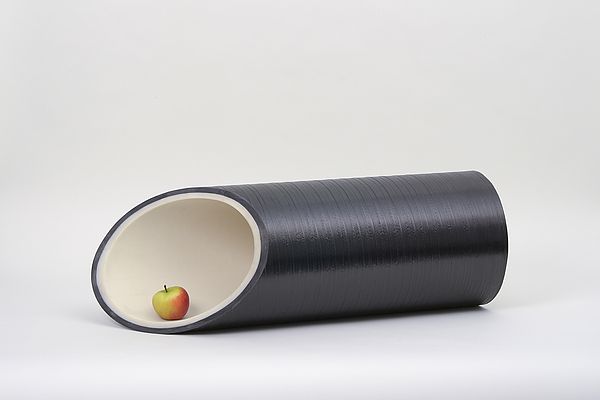To transport raw materials from the seabed to the surface, pipes for the oil and gas industry, particularly risers, have to meet specific requirements. They are highly relevant to security because every single pipe must be able to fully withstand the enormous loads of deep-sea production. Hence, controlling the manufacturing process of wound thermoplastic fiber-reinforced pipes is extremely complex. The same applies to pressure tanks, which are used in the automotive industry for brake and suspension systems of trucks. The EU research project “ambliFibre”, consisting of thirteen international partners led by the Aachen-based Fraunhofer Institute for Production Technology IPT, focuses on the manufacturing of these pipes and pressure vessels and aims to develop an Industrie-4.0-compliant, highly flexible and reliable control system.
Pipes used for oil and gas transport in the deep sea must be able to withstand extreme loads caused by waves and pressure while remaining resistant against corrosion and weathering at all times. Wound pipes made of fiber-reinforced plastics are particularly well suited for riser systems as they can also be used to transport oil and gas in ultra-deepwater areas.
The advantage of the material to the application of metal within these structures: The heavy-duty and very corrosion-resistant fiber-reinforced plastics substitute the metallic strengthening layers in multi-layered riser pipes, which leads to a reduction of their dead load. Considering that these pipes can have a length of two to three kilometers, this is a substantial advantage for the overall performance of the pipe system.
Everything under control: synchronization of laser and winding system
The laser, which is used for melting the matrix material during the winding process, has to release a precisely defined amount of energy into the process zone. Concurrently, the system and the semi-finished product, i.e. the yet unmelted material, are in constant movement throughout the running process. A large amount of control data has to be calculated and transferred in real-time in order to ensure that the winding process is continuously running. That is the only way to guarantee that the material will not overheat while the individual layers are sufficiently welded to each other.
In order to optimally synchronize all components of the system, the thermal characteristics in the process zone are recorded with a thermal imaging camera. Concurrently, a simulation software and data mining algorithms perform an analysis during the process. This allows for a precise determination of thermal energy that is required for the imminent welding process.
Quality monitoring and response in real-time
The networking of all system and software components through suitable interfaces and data processing is a prerequisite. Data is consistently structured and imported into databases, then sorted and evaluated by appropriate analytical methods. These include reliability analyses, which can prolong the lifetime of the overall system, as well as lifetime inspections for the manufactured products that also take into account the upstream and downstream stages of the process.
The “ambliFibre” project has received funding from the European Union’s Horizon 2020 research and innovation programme under grant agreement no. 678875.


















